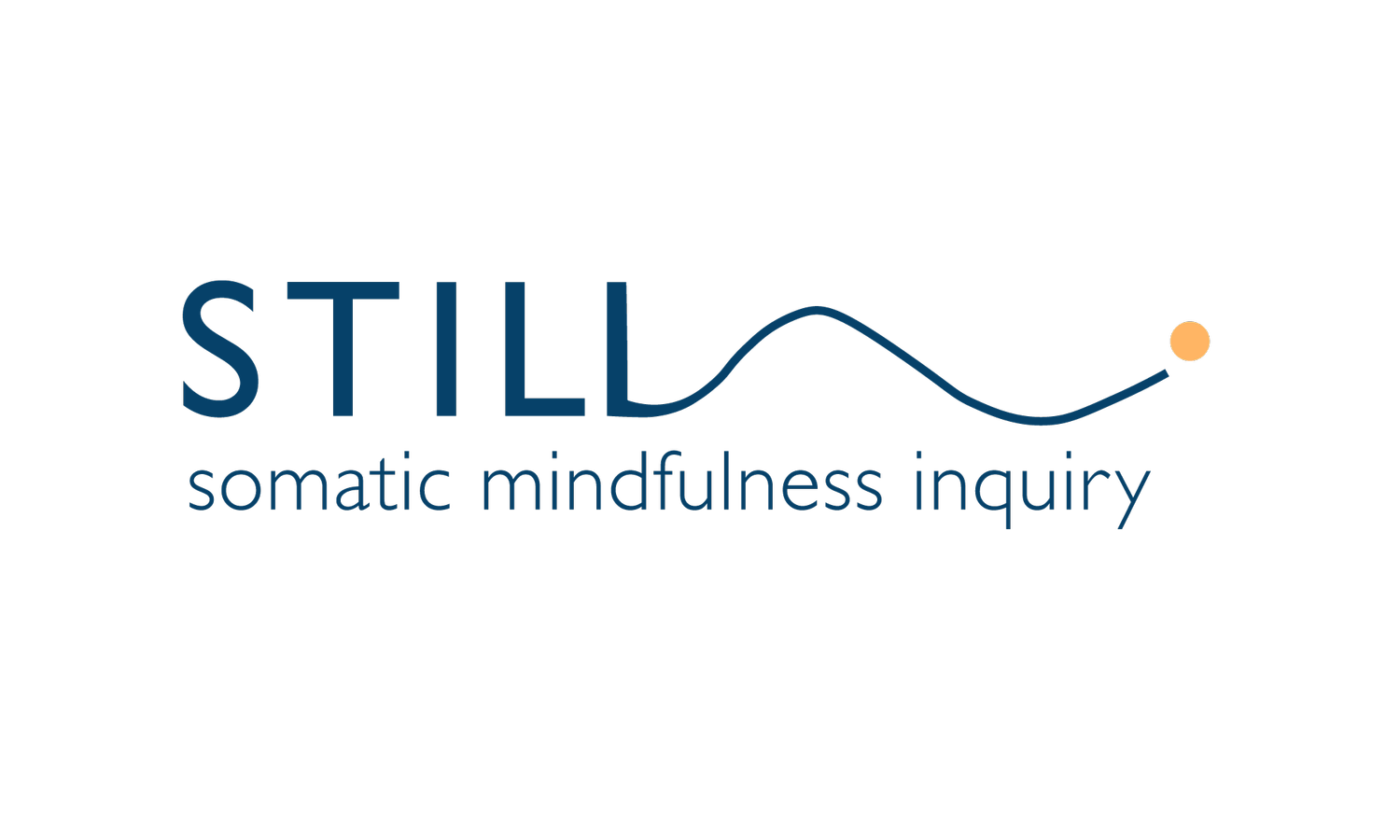Somatic Mindfulness Inquiry: Trauma Informed Stillpoint Method
Healing ourselves Helping others
About this self-paced course:
First, we learn the basics of trauma, the hypervigilance and negativity bias of our nervous system, and how to regulate ourselves.
Second, we get to know ourselves somatically (in our body). We practice tools to work with the uncomfortable sensations and energy that we’ve disconnected from. We use powerful tools to stay grounded in the safety of the present moment and break the trance of catastrophic thinking.
Third, building on the knowledge, awareness and resilience from the earlier sections, we learn to support others in this exploration and healing.
This self-paced course originated as a 10 week intensive Trauma Informed Stillpoint Method for Coaches and Counselors in spring 2023.
Section One: Safety IS the Treatment
In this section, we review the elements that create a foundation of feeling safe?
We review the basics of trauma, hypervigilance in the nervous system, and self-regulation.
Safety IS the treatment is a quote from Dr Stephen Porges, founder of the Polyvagal Institute.
Somatic Mindfulness
Nervous system regulation
Why do we need trauma informed coaching and counseling?
Trauma basics and neuroception
Healing ourselves and others
Accurate neuroception
Go to strategy: fight, flight, freeze, fawn
Polyvagal ladder, somatic inquiry
Hypervigilance, trauma informed
Breathing when in freeze
New neuroscience, nervous system
Somatic inquiry: Need to fix
Section Two: Thoughts and Sensations
In this section,
Traumatic memory/ the past
Types of thoughts
Tools to witness thoughts
Somatic Inquiry
I am friends with my mind
Stored trauma as sensation in body
Somatic inquiry: locate, describe, witness thought
Section Three: Our Younger Self
In this section,
Co-regulating
Trusting our adult self
Somatic Inquiry
Our adult self with our younger self
Experiences and forming
Core deficiency beliefs
Section Four: Minimizing and Dismissing Trauma
In this section,
Minimizing and dismissing trauma
Comparing trauma and shaming
Somatic Inquiry
My trauma is legitimate too
Tonglen: Breathing in suffering, breathing out relief
Section Five: Low Vigilance Relationships
In this section,
Vigilance in Relationships/
Safe Enough Relationships
Homework Inquiry: On Facilitating and Being Facilitated
Somatic Inquiry: Vigilance in Relationships/ Safe Enough Relationships
Somatic Inquiry: Changing Our Relationships
Section Six: Intergenerational and Systemic Trauma
In this section,
What Shaped Your Parents and Grandparents?
Somatic Inquiry: Intergenerational Healing, Resilience, Compassion
Section Seven: Connection and Inclusion
In this section,
Nervous System Reading and Regulating
Somatic Inquiry: You Can Be Yourself With Me
Can I Be Myself With You?
What Happens When We Facilitate Someone
Normalizing Trauma and Language
Somatic Inquiry on facilitating each other
Section Eight: Releasing Shame
In this section,
Neurodiversity and Shame
Preparing Ourselves to Facilitate
Shame and Exclusion
Facilitating on Shame
Section Nine: Neuroception and Emotional Regulation
In this section,
What Is Trauma Informed Somatic Mindfulness?
Signaling Our Nervous System
Regulating While Feeling Threatened
Section Ten: Integration
In this section,
Interoception, Polyvagal System
Working With Someone In A Fight Response
Working with Someone in Freeze or Shut-Down
Fawning, People Pleasing, Compliance
Flight Response and Anxiety Talking
Reach Your Hand Back
Regulating Practices
Breath
4 7 8 Breathing pattern
Long exhales with Vooo
Body
Welcoming Sensations in the Body
Face Heart Connection
Senses
Being in nature
Mindfulness Practices
Tonglen
Extended Exhale Breathing
2 Minute Breath Awareness in Nostrils
Face Massage
Tapping
Eye Gazing
LovingKindness
Cyclic Sighing
Grounded In Your Body
5 Point Body Scan
Memories of Friends
